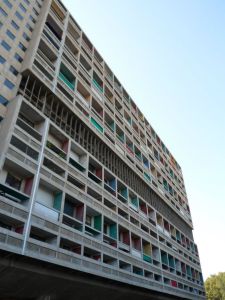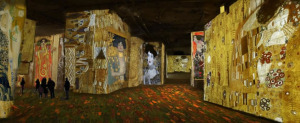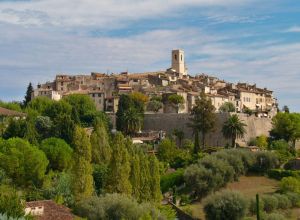What a difference 20 years makes!
In 1994 I took an art and architecture tour of the South of France as a student of art history and design, luxuriating in all its cultural glories, trying hard to grasp all the knowledge and historical context of what I was seeing.
Two decades later, earlier this month, I returned as a tour guide, with 15 years of design and art history teaching experience under my belt. I had a deeper appreciation of all we saw. I could easily articulate what I was seeing. It was a wonderful feeling.
We were a small but lovely group on this 9-day luxury art and architecture tour that began and ended in Nice and took us from the glamorous French Riviera to the romantic countryside and small villages of Provence to the cosmopolitan Marseille. The tour was a veritable feast of stunning works by such artists as Van Gogh, Chagall and Matisse, as well as many gorgeous and historically significant churches, chateaus and other sites, many of which date back to the 12th century.
All of the sites I had previously visited, with the exception of the new Van Gogh Museum in Arles – and yet in some ways, it was as if I was visiting them for the first time, with new eyes.
And there were surprises. Many of you know that I’m not a big fan of architectural modernism, and yet one of my favorite stops on this tour was the Le Corbusier-designed Unité d’Habitation (Housing Unit) in Marseille.
Built between 1947 and 1952 as a mixed-use complex with 337 apartments arranged over 12 stories, it is suspended on large piloti. In a parkland setting, the building also incorporates shops with architectural bookshop, sporting, medical and educational facilities, a hotel and a gastronomic restaurant, Le Ventre de l’architecte (“The Architect’s Belly”). One of Le Corbusier’s most famous works, it proved enormously influential and is often cited as the initial inspiration of the Brutalist architectural style and philosophy.
And brutal it is, with its rough-cast concrete construction. One could even mistake it for a Cold War-era Soviet apartment complex.
Twenty years ago, I didn’t get it. I thought it was ugly. But on this recent trip I understood what Le Corbusier was trying to accomplish. I understood the theory behind it. I understood the meaning of the building as a 20th-century icon and its pending designation as a World Heritage site by UNESCO.
The idea was to create a self-sustaining community where residents would not have to venture out of the building for most of their needs. It was a revolutionary concept at the time, but is now practiced commonly throughout the world. Not surprisingly, the Unité is popular with its residents and is now mainly occupied by upper middle-class professionals.
Don’t get me wrong. I still adore the small villages of Provence and the wonderful museums and chateaus throughout the region. (Particularly striking was the Klimt and Vienna exhibit at Carrières de Lumières in Les Baux de Provence.) But isn’t that one of the joys of revisiting places many years later – the surprises? Isn’t it a delight to see something with new eyes?
The only thing is, I don’t think I want to wait another 20 years before returning to the South of France. It offers too much of a feast to forgo for such a long time.
Warm regards,
Eleanor





